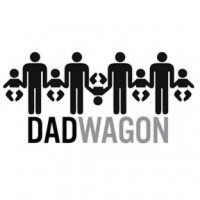
If, like me, you had a free 15 minutes or so between the time your monstrous offspring went to bed and the moment you drunkenly blacked out on the sofa, you probably read the New Yorker’s 24,558-word exegesis on Scientology, and the defection from the church of film director Paul Haggis.
It’s a good read, I guess, although the length—necessitated though it is by the complexity of the subject—does manage to render boring normally exciting things like human bondage, mysterious disappearances, nickel-plated motorcycles, and, of course, Xenu, volcanoes, H-bombs, and Thetans. A couple of points leaped out at me, though, mostly having to do with the education of Scientologist kids. Apparently, there exist entire schools that follow L. Ron Hubbard’s educational system, “Study Tech”:
It is one of the more grounded systems that he developed. There are three central elements. One is the use of clay, or other materials, to help make difficult concepts less abstract. [Haggis’s daughter] Alissa explains, “If I’m learning the idea of how an atom looks, I’d make an atom out of clay.” A second concept is making sure that students don’t face “too steep a gradient,” in Hubbard’s words. “The schools are set up so that you don’t go on to the next level until you completely understand the material,” Alissa says. The third element is the frequent use of a dictionary to eliminate misunderstandings. “It’s really important to understand the words you’re using.”
Lauren, the middle sister, initially struggled in school. “I was illiterate until I was eleven,” she told me. Somehow, that fact escaped her parents. “I assume it was because of the divorce,” she says.
Somehow, this doesn’t surprise me. Take a wacko cult like Scientology or, say, fundamentalist Christianity, and apply its principles to education, and the results won’t be good. Of course, this could also easily have happened in secular public schools. In other words: Scientologists—just like us!
Haggis put his daughters in an ordinary private school, but that lasted only six months. The girls weren’t entirely comfortable talking to people who weren’t Scientologists, and basic things like multiple-choice tests were unfamiliar. At a regular school, they felt like outsiders. “The first thing I noticed that I did, that others didn’t, is the Contact,” Alissa told me, referring to a procedure the church calls Contact Assist. “If you hurt yourself, the first thing I and other Scientology kids do is go quiet.” Scientology preaches that, if you touch the wound to the object that caused the injury and silently concentrate, the pain lessens and a sense of trauma fades.
This is something I always notice in big features about unusual subcultures: how people feel like outsiders in the so-called mainstream world. But don’t all students feel like outsiders? Isn’t that a basic tenet of American pop culture? Okay, so the Scientologist kids go quiet when they get hurt, and the hardcore Christians bow their heads and pray at lunchtime, and the Mormons have to drink caffeine-free Diet Coke. Big deal. Everyone’s a freak or a geek these days.
The girls demanded to be sent to boarding school, so Haggis enrolled them at the Delphian School, in rural Oregon, which uses Hubbard’s Study Tech methods. The school, Lauren says, is “on top of a hill in the middle of nowhere.” She added, “I lived in a giant bubble. Everyone I knew was a Scientologist.”
For one course, she decided to write a paper about discrimination against various religions, including Scientology. “I wanted to see what the opposition was saying, so I went online,” she says. Another student turned her in to the school’s ethics committee. Information that doesn’t correspond to Scientology teachings is termed “entheta”—meaning confused or destructive thinking. Lauren agreed to stop doing research. “It was really easy not to look,” she says. By the time she graduated from high school, at the age of twenty, she had scarcely ever heard anyone speak ill of Scientology.
Again, doesn’t this just put Scientologists in the mainstream of religion-based American private education? Although it is weird that a religion that may only have 25,000 adherents in this country runs private schools in rural Oregon, isn’t this how children in all closed communities grow up?
Look, I’m definitely on the anti-Scientology side of things. The lower levels of belief, from what I understand, are annoying, and the upper levels sound truly insane. But if we’re going to scrutinize (and ridicule) a Scientology-based approach to education, hadn’t we better do the same for all American religious education? What’s the difference here—I mean, apart from the billion-year work contracts for minors, the re-education camps and Tom Cruise?



